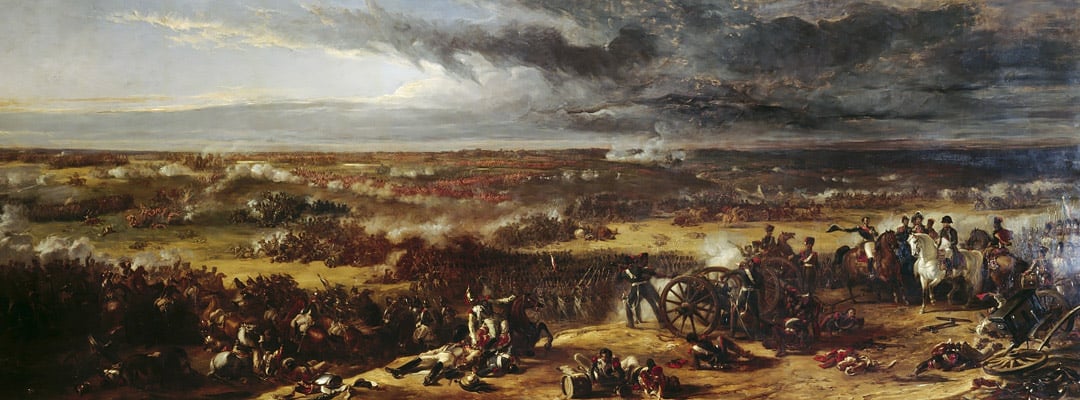The Invention of the Wellington Boot
How the Duke of Wellington, victor at the Battle of Waterloo and fashion icon, gave his name to the humble welly.

MILITARY FASHION
Military uniforms, fame and fashion have always been closely linked. Regimental dress uniforms were designed to stand out and impress young men into joining up – with the added bonus of attracting the opposite sex in the process.
When the French Revolutionary and Napoleonic wars (1792–1815) brought much of Europe into battle, it is hardly surprising that they also introduced many military fashions into civilian life.
TROUBLESOME TASSELS
In the 1790s officers in the British Army wore boots called ‘Hessians’, which were named after the German mercenaries who fought alongside the British in the American War of Independence (1775–83). Made of soft, highly polished calfskin, they were knee high with a curved top, similar to a riding boot, but with a ‘V’ shape, decorated with a tassel, cut into the front.
From the 1790s onwards, ordinary soldiers stationed in hot climates began to wear lightweight linen trousers, instead of their normal woollen breeches. Back home, the fashion for wearing these tight-fitting trousers caught on in the 1800s. It became associated with Beau Brummell, the style icon of his day.
The trouble was that the tassel on ‘Hessian’ boots, which were designed to be worn with traditional breeches, made them difficult to wear with these newly fashionable trousers.
PIONEERING CUT
At some point in the early 1800s Arthur Wellesley, then Viscount Wellington, asked his shoemaker, Mr George Hoby of St James's Street, London, to make a boot which was easier to wear with the new trousers. Hoby removed the tassel and cut the boots lower to make them more comfortable for riding.
Even before his great victory over Napoleon at the Battle of Waterloo in 1815, Wellington was on his way to becoming a fashion icon. By 1813, and the victory at the Battle of Vittoria, Wellington’s fame led others to start wearing this new style of boot. They duly became known as ‘Wellingtons’.
PRUSSIAN IMPOSTERS
The Prussian Field-Marshal von Blücher, whose arrival on the battlefield of Waterloo tipped the balance in Wellington’s favour, was also afforded the honour of having a boot named after him. The ‘Blücher’ was cut even lower than the Wellington, similar to an ankle boot. Von Blücher had commissioned this new boot for the sake of the comfort of the ordinary Prussian soldier.
Naturally the British did not take to Blüchers as well as they did to Wellingtons. In 1841 they were called ‘shocking imposters’ by the satirical magazine Punch.
WELLINGTONS AT WAR
Wellington became a prominent figure in politics after Waterloo, becoming Prime Minister in 1828. Political cartoonists used the Duke’s boots and his prominent nose to represent him. By 1830 he was being depicted simply as a Wellington boot with a head.
Wellingtons remained fashionable until the Duke’s death in 1852, but had declined in popularity by 1860 when the ankle boot, no longer named the Blücher, finally superseded them. Nonetheless they continued to be worn by senior officers in the British Army, seeing service in the Crimea and the First World War.
Meanwhile, in 1856 the Edinburgh-based North British Rubber Company had started to manufacture Britain’s first rubber or ‘gum’ boots. With the name of the duke still retaining a patriotic pull on consumers, these new boots were soon also renamed Wellingtons in Britain.
Their popularity did not become widespread until the First World War, when in 1916 the company was commissioned to produce millions of pairs as standard winter kit for ordinary soldiers, to prevent ‘trench foot’, a medical condition caused by prolonged exposure to damp.
At the end of the war, soldiers brought them home and introduced these extremely practical items of footwear to farms, gardens and allotments all over the country. A century later, music festivals and fashion catwalks are still benefiting from this wartime legacy.
To see examples of the Duke’s original boots, visit Apsley House, his London home, and Walmer Castle, Kent, his official residence as Lord Warden of the Cinque Ports, which is where he died in 1852.
By Rowena Willard-Wright